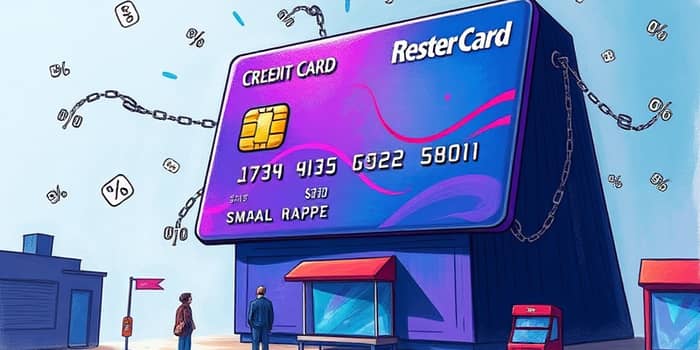
Credit cards promise convenience, rewards and seamless transactions. Yet behind the glossy marketing materials lies a labyrinth of fees, complex rules and risks that both merchants and consumers rarely see. In this deep dive, we reveal the hidden charges, rising costs and regulatory traps you need to understand to protect your bottom line and avoid unwelcome surprises.
Every time you swipe, tap or click, card companies and networks collect a portion of the value in ways they seldom highlight. By peeling back the curtain on these practices, you can make informed decisions, negotiate better terms and safeguard your finances.
Let’s explore why the real cost of credit card use can be far greater than advertised, and how you can navigate this complicated terrain.
Advertised credit card perks focus on points, travel miles and cash back bonuses. But fewer companies trumpet the hidden and rising fees that underpin their profit models. From annual dues to transaction surcharges, these costs often materialize only after you’ve signed up or completed hundreds of purchases.
Behind every attractive rewards program lies a triad of revenue streams: annual fees, high interest rates and processing fees. This trifecta, sometimes called the “triple dip,” means card issuers earn from multiple angles simultaneously, without prominently sharing the full breakdown.
Merchants bear the brunt of processing costs, which average between 1.5% and 3.75% per transaction in 2025. Rates vary by network and sales channel, with retail transactions paying less than eCommerce due to lower fraud risk. Consumers indirectly absorb these charges through higher product prices.
In 2022, swipe fees in the U.S. surpassed $126.4 billion—more than double a decade earlier. Combined with debit processing, total fees reached $160.7 billion. As these costs grow, merchants often shift them to consumers, inflating everyday prices.
Alongside transaction fees, merchants face an array of smaller charges easily lost in fine print. These can include monthly statement fees, PCI compliance costs, batch processing surcharges and chargeback penalties. Though each fee may seem minor, they add up quickly and erode profit margins.
Many of these charges are tucked away under ambiguous labels, making them hard to identify without close scrutiny. For merchants, poorly disclosed fees reduce profits and can drive family-owned shops to raise prices or shut down.
Card issuers and banks don’t rely on a single source of income. Instead, they leverage three major fee streams simultaneously:
Interest rates at the 25 largest card banks average above 30%, costing consumers an extra $400–$500 per year in interest alone. Meanwhile, 15 big banks average rates over thirty percent, widening the gap between large issuers and credit unions.
Attempts to pass fees onto customers via surcharging programs require strict adherence to network rules and state laws. Merchants must register with card networks, display proper signage, calculate fees correctly and maintain accurate records. Failure to comply can result in hefty fines, account termination or legal action.
PCI compliance is another mandatory requirement aimed at reducing data breaches but introduces costs for implementation, audits and training. Businesses that fall short risk fines, increased processing fees and reputational damage.
Rewards programs drive spending and loyalty but often hide their real expense within higher processing rates for all merchants. Ultimately, every consumer pays for perks through inflated prices, whether they use rewards cards or not.
Credit card fraud losses in the U.S. are projected to hit $12.5 billion in 2025. To offset this risk, networks raise processing rates on online and card-not-present transactions. Understanding complex pricing models obscure true costs is essential for merchants evaluating new payment solutions.
While fees may feel inevitable, both businesses and individuals can take proactive steps to minimize their impact:
By staying vigilant, asking detailed questions and demanding transparency, you can reduce hidden costs and protect your bottom line. Remember that knowledge is power: the more you uncover about the fees and rules in play, the more leverage you gain in negotiations.
Credit card companies may not advertise every fee or risk, but you now have the insider insight to level the playing field. Armed with this knowledge, make informed choices, negotiate better terms and keep more of your hard-earned money where it belongs—your pocket or your business.
References













